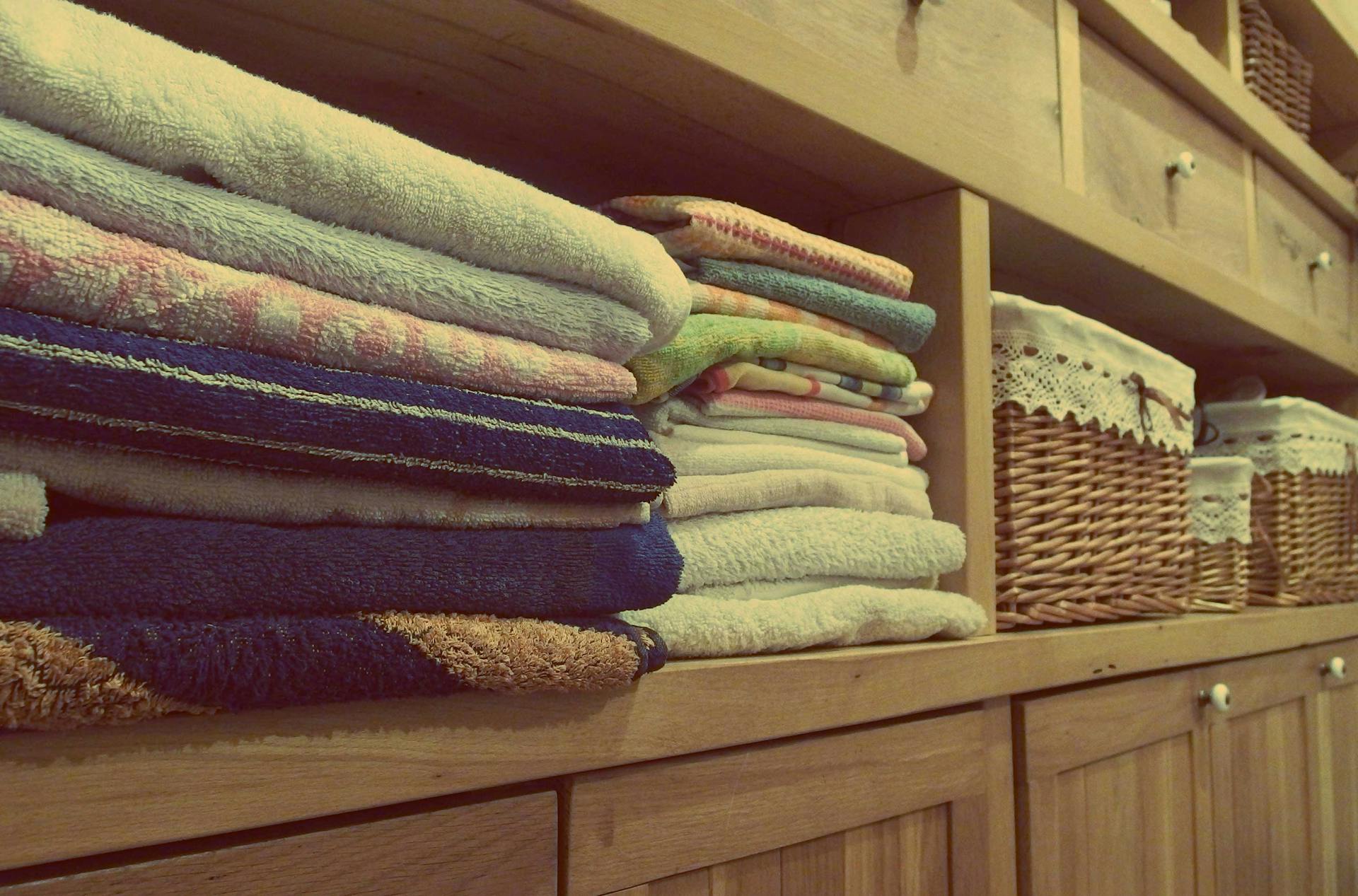

I’ve been groggy the last couple of days. That’s expected — what with daylight saving time. However, it’s nothing to balk at. And I think COVID has made the “can’t sleep” worse.
I recently asked a doctor about my non-sleep habits. Anxiety in the night — so I get up and work, play vid games or watch TV. The doctor told me that there are many high-functioning individuals who are not able to sleep very many hours. If you have worked most of your life to develop good sleep habits — and it hasn’t worked — he said the key is to take a catnap here and there during the day.
My boss put in a small “nap-room” in the office. I became worried about “kooties,” so the boss provided each person with a sheet to put over the couch. Those are washed at the end of the week. A little caffeine and 20 – 30 minutes to close my eyes (and occasionally drop off to sleep) makes a big difference in how I feel. The most remarkable thing is that I can sleep better at night on the days I take a little catnap.
Ensure You Get Enough Sleep
It turns out that losing even an hour of sleep can affect your health. “We have more difficulty springing forward than we do falling back,” says Dr. Brynn Dredla, a Mayo Clinic sleep-neurologist.
“If someone sleeps from 10 p.m. to 6 a.m., and then we spring forward, on Monday morning we’re asked to now be driving when we should normally be sleeping,” adds Dr. Dredla. “So that can be a big impact because our body is under the impression it should be asleep when we’re asking it to perform a pretty complex task.”
It’s similar to jet lag. You feel sluggish because your circadian rhythms are out of sync. However, this phenomenon is known as “social jet lag” as we haven’t traveled to a different time zone.
“We do not change time; we only change social clocks,” explains Till Roenneberg, a German researcher who specializes in chronobiology. “Days are not becoming additionally longer, and the sun does not set additionally later.” The time has only changed on clocks, computers, and phones.
While frustrating, daylight saving time is temporary for most people. Some may recover after a couple of days, while it may take a couple of weeks for others. But, that shouldn’t take away from the fact that we’re facing a sleep crisis.
It’s been reported that more than 100 million Americans of all ages are not getting an adequate amount of sleep. Additionally, 50 to 70 million US adults have a sleep disorder. These include insomnia, sleep apnea, restless leg syndrome, and narcolepsy.
What causes these sleep problems? Well, here are the most common culprits;
- Physical disturbances like chronic pain from arthritis or ulcers.
- Medical issues like asthma.
- Psychiatric disorders including depression and anxiety disorders.
- Genetics. Narcolepsy, for example, is genetic.
- Aging. It’s been found that those older than 65 have a sleep disorder.
- Medications that may interfere with sleep, such as antidepressants, blood pressure medication, and over-the-counter cold medicine
- Working the night shift.
- Environmental factors like blue light exposure or if your partner snores.
And, within the last year, many people are suffering from “coronasomnia.” Because of the pandemic’s stress, a lot of us have had trouble falling or staying asleep.
Regardless of the exact reason — when not addressed, sleep deprivation can lead to severe consequences that can’t be rectified with a pot of coffee. These include;
- Physical risks ranging from cardiovascular disease, obesity, and a decreased immune system.
- Mental health disorders including anxiety, depression, and bipolar disorders.
- Mood changes, such as irritability.
- Being more prone to accidents and injuries.
- Slower thinking, forgetfulness, and reduced attention span.
- Poor or risky decision-making.
- Lack of energy, which can destroy productivity.
- Lowered work performance.
- Burnout.
While concerning, there are ways for you to finally get quality sleep each and every night. You can start by implementing the following X hacks.
1. Set a sleep schedule.
“It’s easier to get sleep when you follow a routine, writes Angela Ruth in a previous Calendar article. “If you don’t make time in your schedule for rest, it may become sporadic. Adjust your rhythm gradually, or you could overcorrect — and oversleeping can leave you feeling groggy and unproductive.”
To get started, establish “times to wake up and go to bed in your online calendar,” advises Angela. “Follow your natural pattern, or circadian rhythm, for the best effect.” Most importantly, “stick to these times as closely as possible, even on the weekends.”
“As you build your schedule around your sleep times, you can add morning and evening routines that help you better manage your day.”
2. Enlist the military method.
Unless it’s your provocative to serve in the armed forces, you don’t have actually to enlist. Instead, the military method was a technique used during WWII to help soldiers combat sleep deprivation. It’s claimed that this guarantees that you’ll fall asleep in just 90-seconds.
Here’s how it works;
- Relax your face
- Release tension by dropping your shoulders
- Drop your hands to the side of your body.
- Exhale and relax your chest
- Relax your legs, thighs, and calves
- Clear your mind for 10-seconds
- Keep repeating “don’t think” over and over for 10-seconds
3. Break the snooze addiction.
In some form or fashion, alarm clocks have been around for over 2,000 years. But, the alarm clock that we’re most familiar with, where we could hit snooze, was introduced by General Electric in 1956. The concept was that this allowed you to wake-up whenever you wanted without being jolted awake by a screeching alarm.
Here’s the problem with that. Even hitting the snooze button once is bad for your health. Mainly because it interferes with restorative sleep.
“Much of the latter part of our sleep cycle consists of REM sleep, or dream sleep, which is a restorative sleep state,” explains Reena Mehra, M.D., M.S., Director of Sleep Disorders Research at Cleveland Clinic. “And so, if you’re hitting the snooze button, then you’re disrupting that REM sleep or dream sleep.”
To break-up with this bad habit, try the following techniques;
- Give yourself something to look forward to when waking-up as opposed to viewing it as a chore.
- If you already forgot, follow your circadian rhythms.
- Place your alarm clock, even if it’s your phone, across the room — or in a different room.
- Get dressed as soon as you wake-up (I make my bed so I can’t get back in…).
- Plan an early morning activity, such as a meeting.
4. Move into a cave.
I wouldn’t recommend literally doing this. The idea here is that your bedroom environment should be similar to that of a cave — a place that is cool and dark.
The ideal bedroom temperature is 60-67 for optimal sleep. In addition to controlling the temperature of your room, you may also want to look into a cooling mat or the Nectar mattress since it comes with a Tencel cooling cover.
Also, light sources like an alarm clock can disrupt your shut-eye. So, try to keep your bedroom as dark as possible. (Consider an eye mask.)
5. Repaint your bedroom.
“When you walk into the bedroom, you want it to transition into a really relaxing, restful space,” says Amy Contreras, owner of Amethyst Interiors of Indianapolis. “Bedrooms should feel a little bit Zen.”
The best colors to accomplish this? Think tranquil colors like light blues, earth tones, or soft, muted colors. “Shades of green, yellow and orange, as well as gray, coral and beige, can also improve sleep quality,” writes Oseye Boyd for HuffPost.
“Everybody is drawn to a certain color palette,” adds Diane Haignere, owner of Ready Set ReDesign in Columbus, Ohio. “A very soft taupe or a soft gray or a very soft buttery kind of a creamy color with a little yellow tone is a good one, too.”
6. Gradually power down.
Unlike your laptop, tablet, smartphone, or TV, you simply can’t hit a power button to shut down for the night. Instead, follow an evening routine that encourages your mind and body to relax.
Preferably, you should do this at least 60-minutes before bed, where you turn off your gadgets and electronics. During this period, you’ll want to engage in calming activities to help you unwind. Some suggestions would be reading, listening to soothing music, yoga, or meditating.
7. Utilize red light.
Unlike blue light, red light doesn’t suppress the release of melatonin. Rather, it stimulates the production of melatonin. In turn, this can improve the quality of your sleep each night.
While the jury is still out on just how effective red light therapy is, you can try it out by purchasing a high-quality red LED light bulb for your bedroom. You’ll then want to use that 15 to 20 minutes before bed.
8. Identify sneaky light sources.
“Did you know that your skin actually has receptors that can pick up light?” asks health guru Shawn Stevenson. “If there’s light in your bedroom, your body is picking it up and sending messages to your brain and organs that can interfere with your sleep.”
So, even if you’ve reduced blue light exposure, any light source, such as a streetlight across the street, can prevent you from getting a good night’s sleep. The quick fix would be to invest in blackout curtains.
But, you should also check for other light-intruders and block them. Think of the hallway light that slips underneath your door. In this case, you might want to turn that light off if it’s not necessary to leave-on it on. Or, you could wear a sleep mask.
9. Change when you drink coffee.
Sorry coffee lovers — but you need to rethink when to consume your beloved cup of coffee.
“Definitely limit coffee when you first wake up,” Laura Cipullo, registered dietitian and author of “Women’s Health Body Clock Diet,” tells CNBC Make It. The reason for this is that it will increase levels of cortisol. Instead, “Have coffee when the body is producing less cortisol, about three to four hours after waking,” Cipullo says.
Also, have your last cup no later than after 3 p.m. Studies have found that coffee can disrupt your sleep up to six hours after consuming it. So, if you’re winding down at 9 p.m., then 3 o’clock needs to be your caffeine cutoff.
10. Stop backlogging water.
Waking-up in the middle of the night is a common cause of sleep loss. The simplest solution is to avoid drinking fluids at least two hours prior to bed. “If you must have some liquids, make sure that you just have a few sips,” says Shelby Harris, PsyD, behavioral sleep medicine specialist and author of The Women’s Guide to Overcoming Insomnia.
“If you are excessively thirsty at bedtime, make sure you’re drinking enough water during the day and you’re not backlogging it all at the end of the day.” And, don’t drink diuretics like alcohol or caffeine at night.
11. Eat a banana before bed.
If you need to munch on something before hitting the hay, preferably an hour or half an hour before, have a banana.
“Potassium and magnesium are natural muscle relaxants, and bananas are a good source of both,” explains Melanie Haiken in a Forbes piece. “They also contain the amino acid L-tryptophan, which gets converted to 5-HTP in the brain. The 5-HTP, in turn, is converted to serotonin (a relaxing neurotransmitter) and melatonin.”
If bananas aren’t your bag, then you can have oatmeal or cherries. In case you’re curious, cherries are a natural source of melatonin.
12. Slip on a pair of socks.
Warm feet have been found to help you fall asleep faster. Another study, however, found that those who wear socks sleep an average of 32 minutes longer. They also wake up fewer times during the night.
13 Try the 4-7-8 breathing method.
With this exercise, you’re focusing only on your breathing. When done correctly, you’ll create a rhythm that will encourage you to enter the realm of sleep. And, it only involves five-steps;
- Make a whooshing sound when you exhale by parting your lips slightly.
- Close your lips, inhale through your nose, and count to 4 silently.
- Hold your breath for 7 seconds.
- Exhale for 8 seconds.
- Complete this cycle by doing this for 4 full breaths.
14. Tap into the power of suggestion.
According to a team of Swiss researchers, a short hypnosis session may help improve deep sleep. After women who listened to a sleep-promoting audio tape that contained hypnotic suggestions, two-thirds less time awake, and about 80 percent more time in a deep sleep.
“There have been many reports that hypnosis can be a good thing for promoting sleep,” said study co-author Bjorn Rasch, a professor with the department of psychology in the division of biopsychology and methods at the University of Fribourg in Switzerland.
“However, usually they’ve been based on people just subjectively indicating how well they feel they’ve slept as a result,” Rasch noted.
To experiment with hypnotherapy, use an app like Sleep Deeply from Harmony Hypnosis.
15. Put down the book and play a brain game instead.
For many of you, this probably goes against what you’ve been told previously. But, consider that when you’re reading, you have to have a light on. And, if you’re really sucked into the book, you may stay-up past your bedtime.
Also, depending on what you’re reading, your brain may be too stimulated to fall asleep.
As an avid reader myself, I’m not a fan of this. However, it does make sense. So, I get my reading time in when I’m powering down for the night.
At the same time, if your mind is wandering too much, consider playing a brain game. I’m not talking about the one that’s on your phone. Rather, these are activities that you can do in your head. Examples include counting backward, visualizing a calming scenery, composing a mental gratitude list, or exercising your memory like naming the states alphabetically.
16. Experiment with progressive muscle relaxation.
“The idea behind PMR is to tense (without straining) different muscle groups then relax,” writes Neil Clark for Sleep Cycle. “Using this method, you work your way through the body until the desired effect – sleep – is achieved.”
It’s a relatively easy exercise that can be done by;
- Raise your eyebrow for 5-seconds to tighten your forehead muscles.
- Release these muscles immediately, feel the tension release, and pause for 10-seconds
- Create tension in your checks by smiling for 5-seconds.
- Relax and pause for 10-seconds.
- Shut your eyes and squint for 5-seconds.
- Relax and pause for 10-seconds.
- Slightly tilt your head back and look at the ceiling when lying in bed. Hold for 5-seconds.
- As your neck sinks back into the pillow, relax your neck and pause for 10-seconds.
- “Move systematically through the body – shoulders, triceps, chest, stomach, hips, thighs, calves, and feet – applying the same tense / relax principle described above,” adds Clark.
17. Rethink your mattress, pillow, and bedding.
If you’ve been using the same pillow or mattress for years, then it’s time to upgrade. However, don’t go with the cheapest or most expensive option. You want to do your homework so that you’ll find bedroom accessories that are just right for you.
Take pillows as an example. Stomach sleepers require a flat pillow, while side sleepers benefit more from a thicker pillow as this supports the head and neck. If you sleep on your back, you’ll need a pillow that supports the natural curve of your spine.
You also should invest in a comfortable mattress. Again, this will depend on whether you prefer softer, “plush” mattresses or something firm and hard. Good Housekeeping has an excellent guide you can use to help choose a mattress.
Also, don’t forget about sheets. For example, in the colder months, I’m a fan of flannel sheets, while when it’s warmer, I like 100% cotton sheets. And, a weighted blanket has seriously changed my life.
18. Manage your worries.
“It’s happened to all of us at some point,” Albert Costill states previously for Calendar. “You lay there, wide-awake stressed and anxious about tomorrow. Worrying is a guaranteed way not to get enough sleep.”
“So, you need to curb those thoughts before letting your head hit the pillow,” he suggests.
Before laying down, resolve any worries or concerns that you have on your mind. “Simply writing down what’s on your mind is an effective technique to clear your head,” adds Albert. “So is jotting down your priorities, looking over your calendar, and having everything prepared for tomorrow.”
“Moreover, do not discuss any topics that make you feel stressed or anxious,” he recommends. “Getting upset about a conversation is a surefire way to get your heart and brain racing.”
19. Dunk your face in cold water for 30 seconds.
Has stress still followed you into the bedroom? You may be able to alleviate by immersing your face in ice-cold water for 30 seconds. Engaging in this actively prompts an involuntary phenomenon called “Mammalian Dive Reflex.” As a result, this instantly lowers your heart rate and blood pressure, which will make it easier to fall asleep.
20. Soak up the sun.
Morning daylight, even for just 15-minutes, improves the quality of your sleep. That’s because sunshine calibrates the body’s internal “circadian” clock. Additionally, sunlight releases serotonin and improves your mood.
Image Credit: benjamin suter; pexels











Deanna Ritchie
Editor-in-Chief at Calendar. Former Editor-in-Chief and writer at Startup Grind. Freelance editor at Entrepreneur.com. Deanna loves to help build startups, and guide them to discover the business value of their online content and social media marketing.